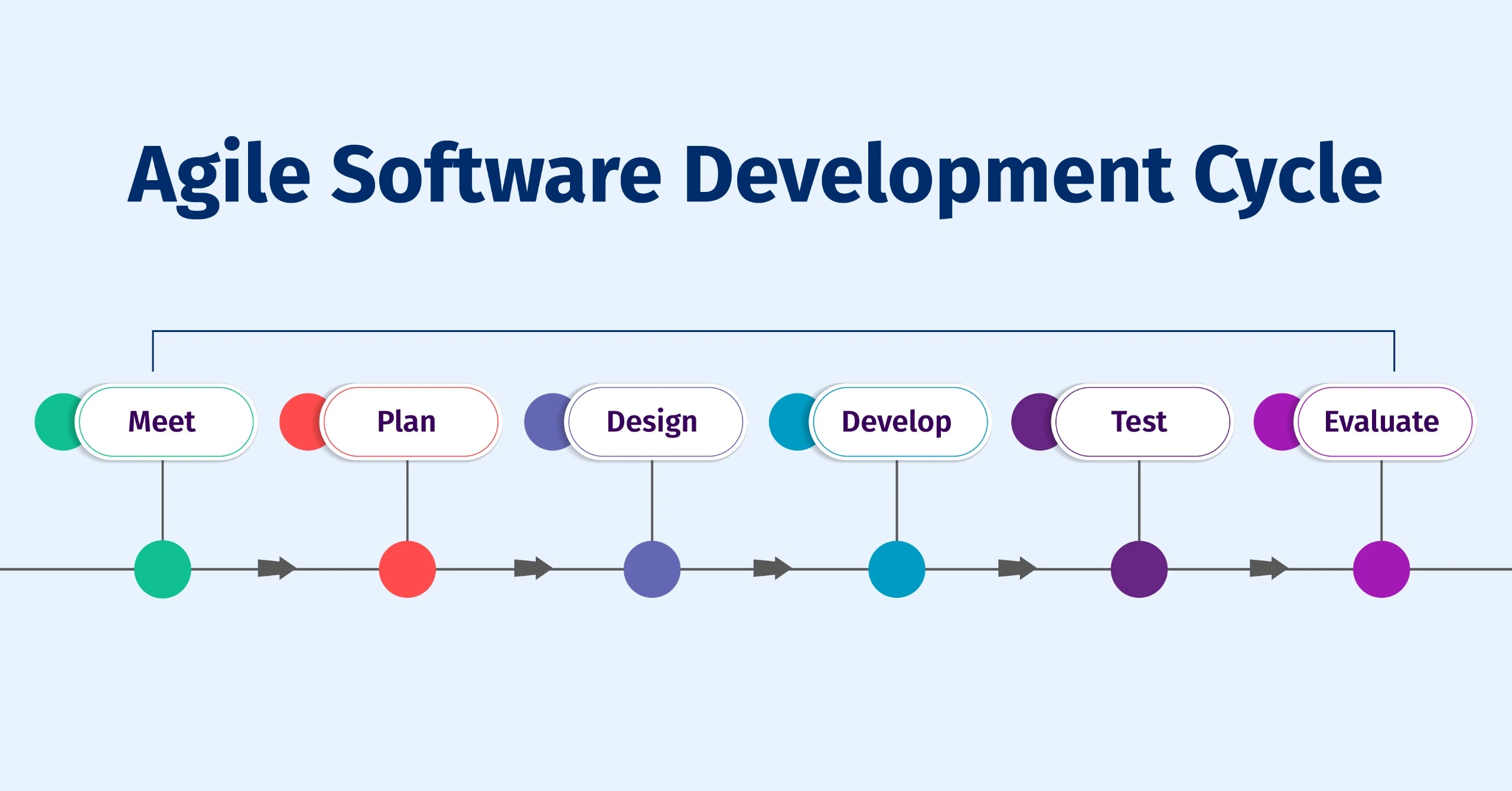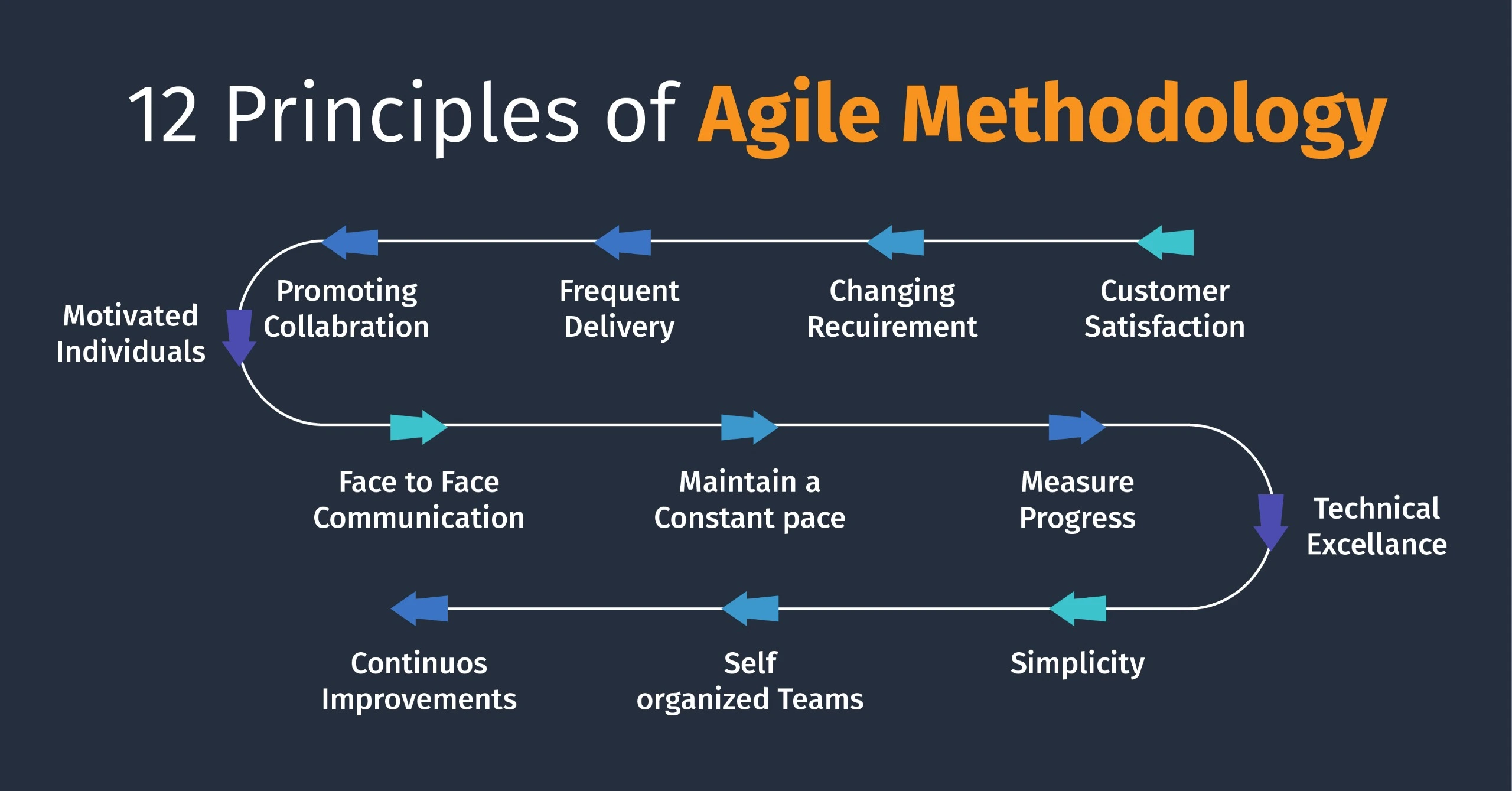In the fast-moving world of software development. Businesses are always looking for ways to be flexible, and adaptable, and deliver products efficiently. Also, Agile software development is a top choice for meeting these needs. In this guide, we will explore the main ideas of agile development. As well as how it works, its benefits, and its guiding principles.
What is Agile Software Development?
Agile software development is a way of building software where teams work together, making small improvements over time. It's all about being able to adapt quickly to changes and keep making things better. They focus on delivering usable software in short bursts, listening to what customers have to say along the way. This method helps teams stay flexible, and work efficiently. It also makes sure the final product meets everyone's needs, making customers happier in the end.
Why Do We Use Agile for Software Development?
We use Agile for software development because it helps teams adjust to changes, work together better, and make software quicker. It breaks the work into small parts, so teams can be more flexible and fix problems early. Agile also improves communication among team members and customers, making sure the final product meets everyone's needs. In the end, Agile makes development smoother, lowers risks, and makes customers happier.
Agile Software Development Cycle
The agile system development or agile software development life cycle is also known as the Agile Development Lifecycle (ADLC). It includes different stages that happen again and again. These stages typically include:

- Planning: In this part, the project team figures out what they need to do and what the project should accomplish. They make a list of the most important features called the product backlog.
- Design: In the design phase, the team plans how the software will look and work. They focus on making it simple and easy to change later if needed.
- Development: In the development phase, the team writes the code. Creates the software based on what's needed and how it should look. They work in short bursts, adding a bit of functionality each time.
- Testing: In agile, testing happens all the time while making the software. This helps find and fix problems early to make sure the quality is good.
- Deployment: Generally, after making and testing the features, they're put into use. Agile encourages releasing small updates often to get feedback and make things better.
- Feedback and Iteration: Agile says it's really important to ask customers and users what they think while making the product. Then, the team makes changes based on what they say to make it better.
Principles of Agile Software Development
Agile software development follows some rules written in the Agile Manifesto. These principles include:

- Deliver software early to keep customers happy.
- Stay flexible with changing requirements during development.
- Focus on frequent delivery of working software, with timeframes in mind.
- Encourage collaboration between business and developers.
- Structure projects around individuals and provide necessary support.
- Prioritize face-to-face communication when necessary.
- Measure progress by the functionality of the software.
- Allow teams to maintain a sustainable pace of work.
- Emphasize excellence and good design practices.
- Keep things simple to maximize productivity.
- Support self-organizing teams in system design and building.
- Regularly reflect on ways to improve effectiveness and make adjustments.
Advantages of Agile Software Development
Agile system development offers several advantages over traditional development methodologies, advantages agile software development including:
- Flexibility: Agile lets teams change easily to keep up as well as with new requirements or market changes.
- Faster Time to Market: Agile helps businesses get their product out faster. By releasing small bits at a time, giving them an edge over others.
- Improved Quality: In Agile, testing all the time and getting feedback makes the software better and has fewer mistakes.
- Increased Stakeholder Satisfaction: By including everyone involved in making decisions. Agile makes sure the final product makes them happy and also makes them more satisfied.
- Better Risk Management: Agile makes it easier to handle problems by splitting the work into small parts. So teams can find and fix issues early on.
Example of Agile Software Development
An example of Agile software development is a team making a new mobile app. They start by planning what features the app will have and then design how it will look. After that, they code small parts of the app, testing it often and asking users for feedback. They use that feedback to make the app better. When it's ready, they put it in the app store. Even after it's out, they keep updating it based on what users say, following Agile principles.
Learners Also Read: A Comprehensive Guide to 5 Data Lifecycle Phases
Conclusion
In conclusion, Agile software development changes how teams make software. By focusing on flexibility, teamwork, and getting better all the time. It uses a cycle of planning, designing, making, testing, and using. As well as getting feedback to deliver good products that fit what customers want. Following Agile rules and using its benefits like flexibility, faster time to finish, and better quality. Also, making everyone happy, and handling problems well, helps businesses stay ahead in today's fast world. Using Agile helps teams change quickly, think of new things, and always make customers happy.
Frequently Asked Questions
Ans. Agile is like a big idea that talks about being flexible and working together in software development. Scrum is a part of Agile that gives a clear plan for how to do the work. Agile is more about ideas, while Scrum is a step-by-step guide for teams to follow. So, Agile is like the big picture, and Scrum is the detailed plan to get there.
Ans. The five stages of Agile methodology are:
1. Planning (deciding what to work on),
2. Designing (deciding how the software will look),
3. Developing (writing the code),
4. Testing (checking for errors), and
5. Deploying (putting the finished product into use).







